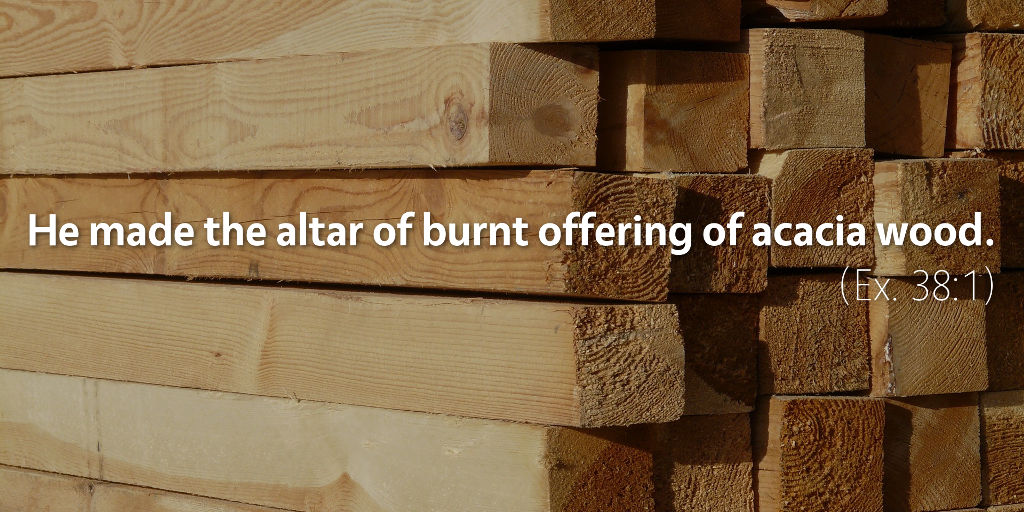Bible Readings for March 27th
Exodus 38 | John 17 | Proverbs 14 | Philippians 1
The court in Exodus 38 looked like a large yard with linen hangings all around it. On the west side of the court was the tabernacle, so that worshipers entered into the court with their sacrificial animals on the east side of the enclosed yard, facing the entrance to the tabernacle across the yard, since the entrance to the Garden of Eden was also from the east (Gen. 3:24).1
Between them and the tabernacle, they would see two fixtures: the bronze altar where the priests offered their sacrifices to Yahweh and the bronze laver where the priests would cleanse themselves with water before entering into the tabernacle. These two fixtures in the court of the tabernacle announced the same theological message in two different ways: God’s people have been defiled by their sinfulness, and they need cleansing if they are to approach the holiness of Yahweh.
So, the first stop of the priests (normal Israelites were not permitted to come any closer to the tabernacle) was at the bronze altar to offer the atoning, substitutionary sacrifices, since there can be no forgiveness of sins without the shedding of blood (Heb. 9:22). But beyond sacrificial blood, the priests required further cleansing with water, and so, closer to the entrance of the tabernacle, the priests would continue on their journey east to west (ultimately, toward the Most Holy Place, the furthest western point of the tabernacle) by stopping next at the laver to wash themselves clean from the defilements of the world.2
These fixtures in the court teach us much about the ministry of Jesus. First, the bronze altar reminds us that the death of Jesus Christ is of primary, foundational theological importance as our atoning, substitutionary sacrifice to forgive us from sin. The author of the letter to the Hebrews tells us plainly that in Jesus, we have a far better altar than the bronze altar ever was (Heb. 13:10), so that the purpose of the bronze altar was always to point forward to Jesus’ altar at the cross.
But second, the laver foreshadows the cleansing waters of baptism. Christian baptism symbolizes both our cleansing through the sacrificial blood of Jesus Christ, and also the cleansing with water that is foreshadowed in the laver—and both point us to the washing and renewal of the Holy Spirit, who personally applies the work of Jesus Christ to us to purify us and prepare us for the holiness of God.
Let us listen, then, to the charge we receive in Hebrews 10:22: “let us draw near [to God] with a true heart in full assurance of faith, with our hearts sprinkled clean [with the blood of Jesus] from an evil conscience and our bodies washed with pure water [in baptism].”
Through the atoning blood of Christ and the cleansing ministry of the Holy Spirit, let us draw near to our holy God.
1 G. K. Beale, The Temple and the Church’s Mission: A Biblical Theology of the Dwelling Place of God (Downers Grove, IL: IVP Academic, 2004), 74.
2 Allen P. Ross, Recalling the Hope of Glory: Biblical Worship from the Garden to the New Creation (Grand Rapids, MI: Kregel, 2006), 193.
Podcast: Play in new window | Download (5.1MB) | Embed
Subscribe: Apple Podcasts | RSS | More

Scripture quotations are from The Holy Bible, English Standard Version copyright © 2001 by Crossway Bibles, a division of Good News Publishers. Used by permission. All rights reserved.


